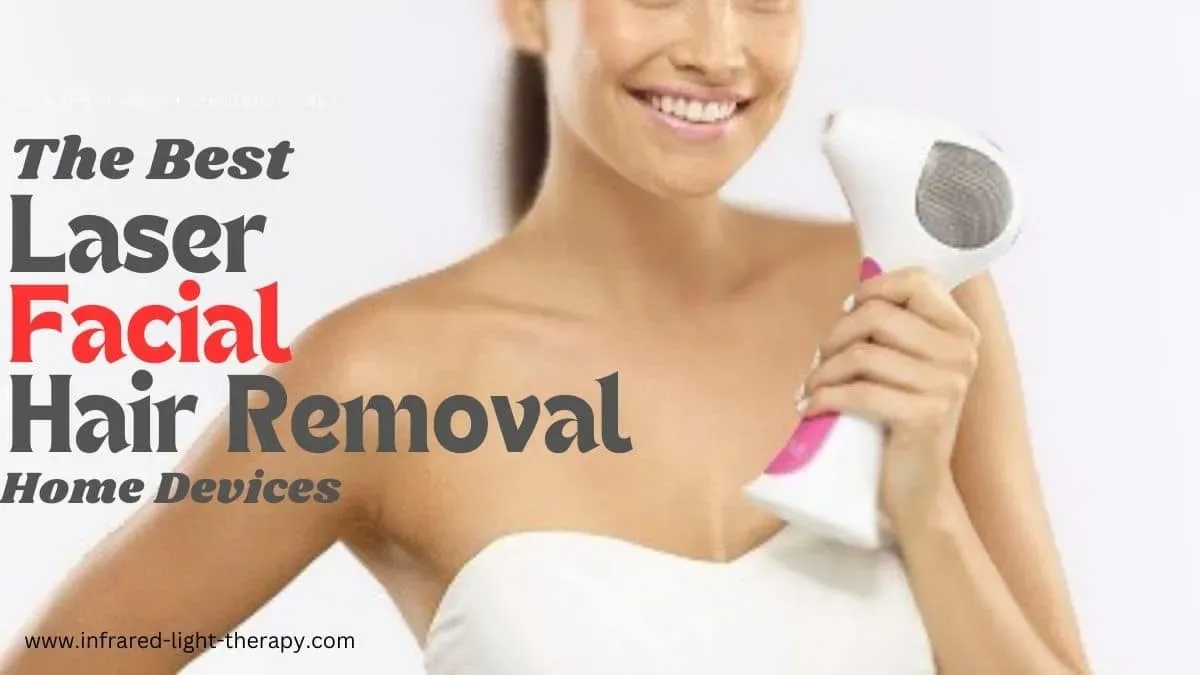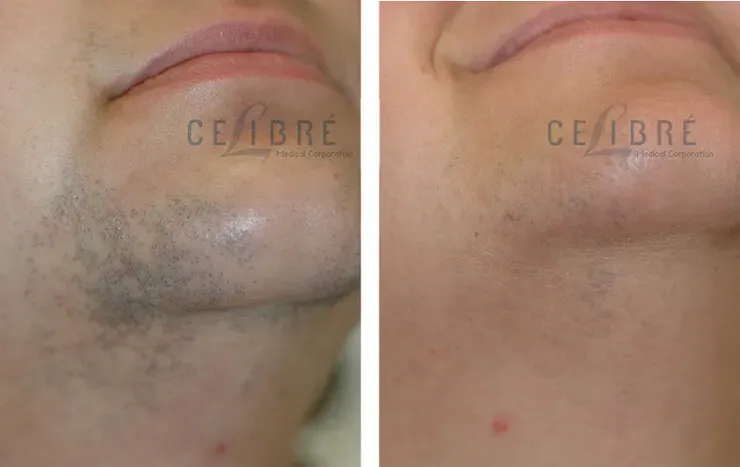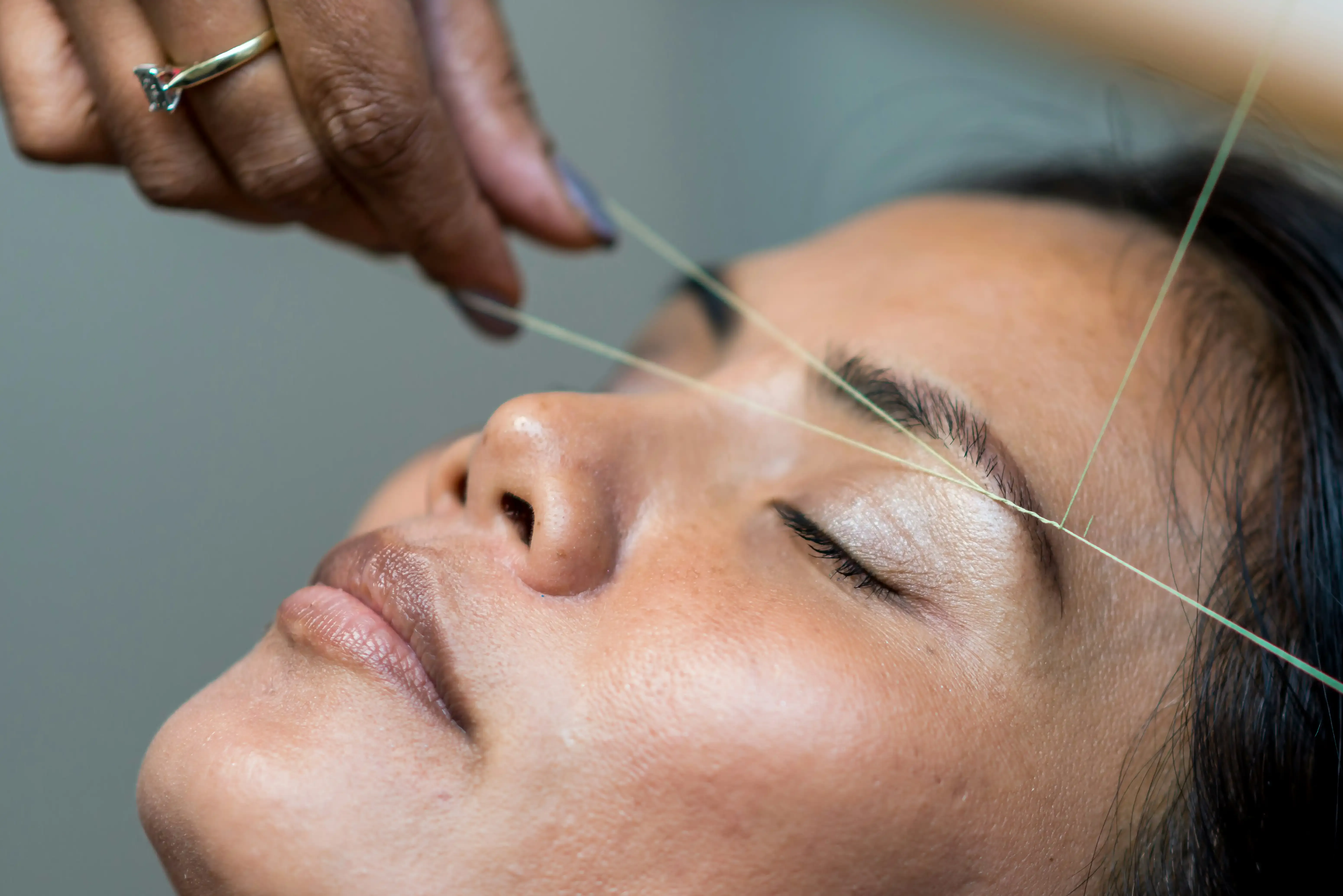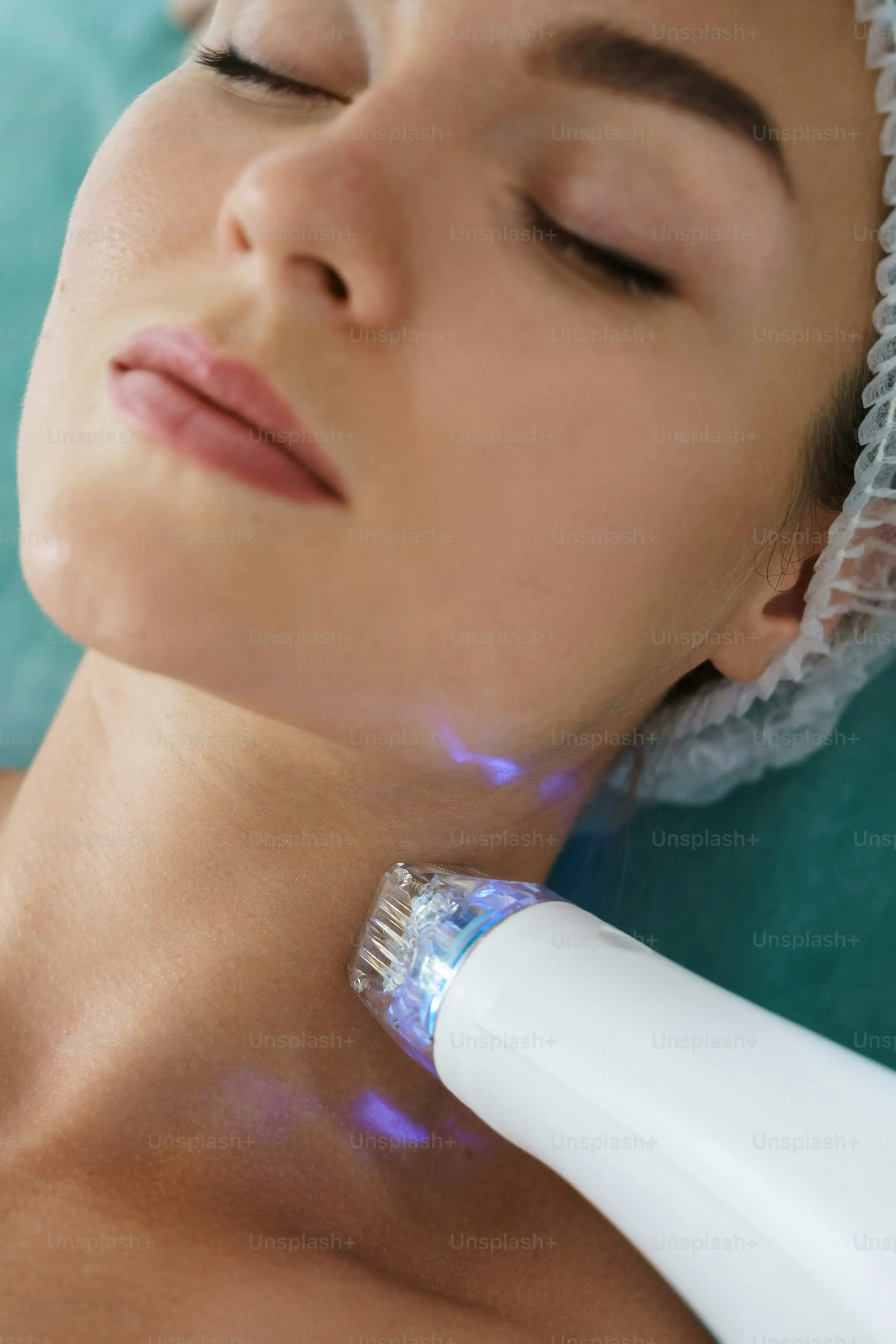Table of Contents
Dealing with unwanted facial hair can feel like a constant battle. Plucking, waxing, shaving – the effort is real, and the results are often temporary, sometimes even leading to irritation or ingrown hairs. Maybe you've stared in the mirror, wondering if there's a better way, something that offers a more lasting peace treaty with that persistent fuzz or stubborn stubble. You've likely heard about laser hair removal, but navigating the options can feel overwhelming. What's the real deal? Is it safe for your face? And crucially, how do you find the **best laser for facial hair removal** that actually works for you?
Understanding What Makes the Best Laser for Facial Hair Removal

Understanding What Makes the Best Laser for Facial Hair Removal
It's About Zapping the Right Target
so you're thinking about laser for that facial fuzz. Good call. Shaving daily is a drag, and honestly, who has time for that? When we talk about the **best laser for facial hair removal**, we're really talking about technology that can find and destroy the hair follicle without messing up the surrounding skin. Lasers work by sending a concentrated beam of light into the follicle. The pigment in the hair, called melanin, absorbs this light. That absorbed light turns into heat, which damages the follicle, ideally preventing future hair growth. Simple enough, right? Except your face skin is sensitive, and facial hair can be tricky – sometimes fine, sometimes coarse, sometimes light, sometimes dark. The laser needs to be smart enough to target just the hair.
Not All Lasers Are Created Equal, Especially for Your Face
This is where things get a bit technical, but stick with me. Different lasers use different wavelengths of light. Why does this matter? Because different wavelengths are absorbed differently by melanin in both the hair and your skin. If you have darker skin, a wavelength that's *too* absorbed by skin melanin can cause burns or pigment changes. If you have light hair, there might not be enough melanin for the laser to target effectively at all. This is why selecting the right *type* of laser is crucial for safety and results, particularly on varied facial skin tones and hair colors. It's not a one-size-fits-all situation.
Here’s a quick rundown on common tech and who it generally works for:
- **Diode Lasers:** Often versatile, good for a range of skin tones (Fitzpatrick I-IV) and hair colors. A solid all-rounder.
- **Alexandrite Lasers:** Faster, generally best for lighter skin tones (Fitzpatrick I-III) and targeting fine, dark hair.
- **Nd:YAG Lasers:** Safer for darker skin tones (Fitzpatrick IV-VI) because the wavelength bypasses surface melanin more effectively. Can be less effective on fine hair.
- **IPL (Intense Pulsed Light):** Technically not a laser, but often grouped in. Uses a broad spectrum of light. Less precise than true lasers, results can vary more. Often requires more sessions. Generally works best on light skin and dark hair.
Precision and Comfort Matter Big Time
Beyond the basic technology, what else makes a laser device or treatment the "best" for your face? Think precision. Facial hair areas are small and contoured – upper lip, chin, sideburns. You need a device or technician that can target *just* the unwanted hair without hitting areas you want to keep clear (like eyebrows, obviously). Look for features like different spot sizes or precise applicators. Comfort is also non-negotiable. Facial skin is delicate, and nobody wants unnecessary pain or irritation. Cooling mechanisms, whether built into an at-home device or applied during a professional treatment, can make a massive difference in managing discomfort and protecting the skin. Energy levels need to be adjustable to match your specific hair thickness and skin sensitivity.
Professional vs. AtHome: Finding the Right Approach for Facial Hair

Professional vs. AtHome: Finding the Right Approach for Facial Hair
Clinic Confidence: The Professional Route
Alright, let's talk about getting your facial hair zapped in a clinic. This is often the first thing people think of when they hear "laser hair removal." You go to a professional, usually a dermatologist's office or a specialized medspa, and they use powerful, medical-grade lasers. The big upside here is the expertise. These folks are trained to know exactly which laser type and settings are right for your specific skin tone and hair color, which is crucial for safety and getting results, especially on delicate facial skin. They have access to machines that are way more powerful than anything you'd buy for your bathroom counter. Think of it like going to a mechanic versus trying to rebuild your car engine with a toolbox from your garage. It costs more, sure, often quite a bit per session, and you have to schedule appointments and commute. But for many, the peace of mind knowing a pro is handling a powerful laser near your face is worth the price tag. They can also treat larger or trickier areas more efficiently.
DIY Domain: The At-Home Device Option
Then there's the at-home device world. This has blown up in recent years, promising convenience and cost savings after the initial purchase. The idea is appealing: zap away in your pajamas whenever you want. These devices, often using IPL or lower-energy lasers, are designed to be safe for consumer use. This means they are less powerful than clinic machines. For facial hair, you need to be extra careful with these. Not all are suitable for the face, and you *must* check the device's specific instructions and warnings for facial use. They typically require more frequent and more sessions to see results compared to professional treatments, if they work at all on your specific hair and skin type. The cost upfront can seem high, but it's usually less than a full course of professional treatments. However, consistency is key, and it's easy to slack off when you're the one in charge of your treatment schedule.
So, how do these two stack up for facial hair?
Factor | Professional Treatment | At-Home Device |
|---|---|---|
Power & Effectiveness | Higher power, typically faster results | Lower power, requires more sessions |
Safety & Expertise | Administered by trained professionals, tailored settings | User-dependent, potential for error if instructions aren't followed |
Cost | Higher per session, significant total cost | Lower upfront cost, potentially less overall |
Convenience | Requires appointments and travel | Treat whenever you want at home |
Suitable For | Wider range of skin/hair types (depending on clinic tech) | More limited range, generally lighter skin/darker hair |
Making the Call: Which Path is Yours?
Deciding between a professional clinic and an at-home device for your facial hair comes down to a few things. What's your budget like? Professional treatments are an investment, often several hundred to a few thousand dollars for a full course. At-home devices are typically a few hundred dollars total. How much time and effort are you willing to put in? Clinic sessions are quick but require scheduling. At-home needs consistent, often weekly, treatments for months. What color is your hair, and what color is your skin? This is probably the most critical factor. If you have dark skin or very light hair, a professional clinic with advanced lasers like Nd:YAG or specialized IPL systems (like those used by hairawaybylaser.com that can handle a broader range of skin types) is likely your only viable option for safety and results. At-home devices are generally limited to lighter skin and darker hair combinations. If you have a bit of patience, the right hair/skin type combo, and want to save some cash, an at-home device *might* be worth exploring, but start with realistic expectations. If you want the safest, most effective, and fastest route, and your budget allows, the clinic is usually the better bet for tricky facial areas.
Top Picks: Evaluating the Best AtHome Laser for Facial Hair Removal

Top Picks: Evaluating the Best AtHome Laser for Facial Hair Removal
Sorting Through the Gadgets
so you're leaning towards the DIY route for that persistent facial hair. Smart move if it fits your budget and lifestyle, but picking the right device feels like navigating a crowded tech store blindfolded. Everyone claims they have the **best laser for facial hair removal** you can use at home, but the reality is, effectiveness varies *wildly*. When you're looking at these at-home gadgets, especially for sensitive facial areas like the upper lip or chin, safety is paramount. You need a device specifically cleared for facial use, with features that protect your skin. Look for integrated skin tone sensors – these prevent the device from firing if your skin is too dark for that particular model, significantly reducing the risk of burns or pigmentation issues. Also, precision attachments or smaller treatment windows are key for targeting small, awkward areas on the face without accidentally zapping eyebrows or areas you want to keep hairy. Don't just grab the cheapest one; research which technology (IPL or diode, usually) is most likely to work for your specific hair color and skin tone combination, and read reviews, focusing on experiences with facial hair removal.
Beyond the Device: Preparing and What to Expect

Beyond the Device: Preparing and What to Expect
Getting Your Face Ready for the Zap
so you've got your device or your appointment booked. You can't just roll out of bed and point a laser at your face, unless you're actively trying to make things worse. Prep work is crucial, whether you're DIYing or hitting the clinic. First rule: stay out of the sun. Seriously. Tanning, even a little, increases the melanin in your skin, making it a bigger target for the laser and increasing your risk of burns or hyperpigmentation. Avoid sun exposure for at least two weeks before your session or using your device. Use sunscreen religiously, even on cloudy days. Also, lay off the waxing, plucking, or electrolysis for about four to six weeks before. Why? The laser needs the hair follicle intact to work. Shaving is fine, actually encouraged right before treatment, because it leaves the root in place but removes the surface hair that could absorb energy and burn your skin. Clean skin is also key – no makeup, lotions, or oils on the treatment area. Just clean, dry skin.
The Immediate Aftermath: What Happens Post-Zap?
You finished a session. Great. Now your face might look a little... angry. Redness and swelling around the treated follicles, sometimes looking like tiny bumps (perifollicular edema), are totally normal. It usually calms down within a few hours, maybe a day. Itching is also common as the skin recovers. Resist the urge to scratch like a maniac. Applying a cool compress or aloe vera gel can help soothe things. Avoid hot showers, saunas, or anything that generates excessive heat for 24-48 hours. Your skin is sensitive right now. Also, keep makeup off the treated area for at least 24 hours if possible to let the skin breathe and recover. And guess what? Sunscreen is still your best friend. Apply it religiously every single day, especially on your face. You just made your skin more vulnerable, and sun exposure can lead to pigmentation issues.
Here's a quick list of post-treatment essentials:
- Apply a cool compress if red or swollen.
- Use aloe vera or a gentle, unscented moisturizer.
- Avoid direct sun exposure; wear SPF 30+.
- Skip hot showers, saunas, or strenuous exercise for 24-48 hours.
- Avoid makeup on the treated area for 24 hours.
- Do NOT pick or scratch treated skin.
Patience is a Virtue (Especially with Hair Growth Cycles)
Don't expect magic after one session, whether professional or at-home. Laser hair removal works best on hair in the active growth phase (anagen), but not all your facial hairs are in this phase at the same time. That's why you need multiple sessions, typically spaced several weeks apart, to catch the hairs as they cycle through. Professional treatments usually require around 6-8 sessions for significant reduction, while at-home devices often need 10-12 or more, sometimes with ongoing maintenance. You won't see hairs vanish instantly; treated hairs often shed over the next week or two. It might look like they're still growing, but they're actually being pushed out. Results are cumulative. Be consistent with your treatments, follow the prep and aftercare instructions diligently, and manage your expectations. It's a process, not a quick fix, but stick with it, and you'll likely see a noticeable reduction in that stubborn facial hair over time.
Finding Your Path to Smoother Facial Skin
Choosing the **best laser for facial hair removal** isn't a simple one-size-fits-all decision. It requires considering your unique situation – your skin tone, hair color, budget, and tolerance for discomfort or time commitment. Whether you opt for the power and precision of a professional clinic or the convenience and privacy of a high-quality at-home device, understanding the technology and setting realistic expectations are paramount. Laser hair removal offers a significant reduction in growth, but it's typically not a one-and-done miracle cure. Maintenance sessions are often necessary to keep that smooth feeling. The journey to less facial hair is achievable with the right tools and a bit of patience, moving you closer to ditching the daily struggle and feeling more comfortable in your skin.
